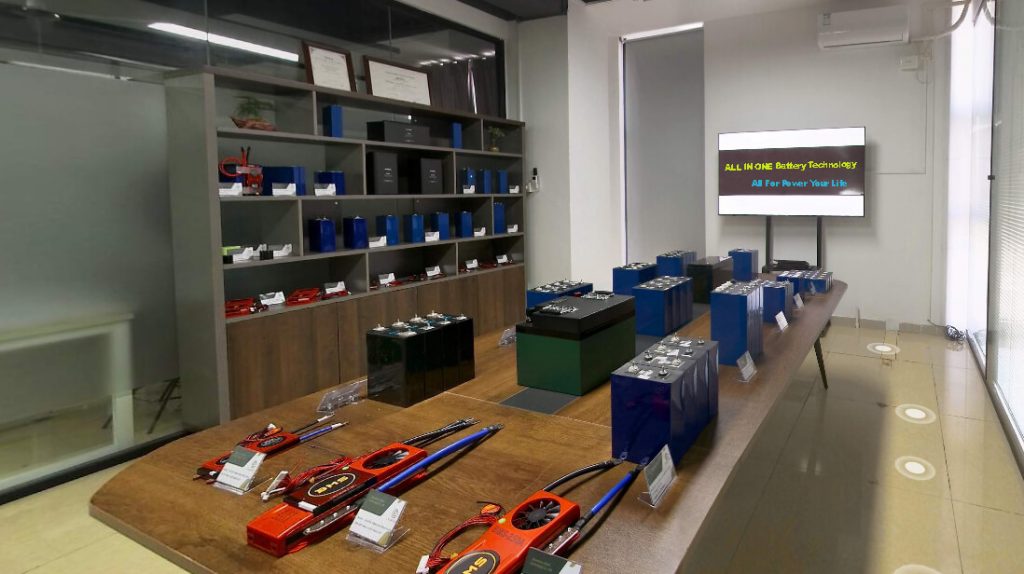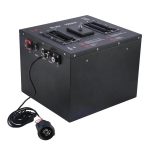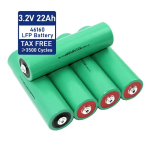
Different Lithium Technologies
Firstly, it is important to note that there are many types of “Lithium Ion” batteries. The point to note in this definition refers to a “family of batteries”.
There are several different “Lithium Ion” batteries within this family which utilize different materials for their cathode and anode. As a result, they exhibit very different characteristics and therefore are suitable for different applications.
Lithium Iron Phosphate (LiFePO4)
Lithium Iron Phosphate (LiFePO4) is a well-known lithium technology in Australia due to its wide use and suitability to a wide range of applications.
Characteristics of low price, high safety and good specific energy, make this a strong option for many applications.
LiFePO4 cell voltage of 3.2V/cell also makes it the lithium technology of choice for sealed lead acid replacement in a number of key applications.
Why LiFePO4?
Of all the lithium options available, there are several reasons why LiFePO4 has been selected as the ideal lithium technology for replacement of SLA. The main reasons come down to its favourable characteristics when looking at the main applications where SLA currently exist. These include:
Similar voltage to SLA (3.2V per cell x 4 = 12.8V) making them ideal for SLA replacement.
Safest form of the lithium technologies.
Environmentally friendly –phosphate is not hazardous and so is friendly both to the environment and not a health risk.
Wide temperature range.
Features and benefits of LiFePO4 when compared to SLA
Below are some key features LiFePO4 batteries which give some significant advantages of SLA in a range of applications. This is not a complete list by all means, however it does cover the key items. A 100AH AGM battery has been selected as the SLA, as this is one of the most commonly used sizes in deep cycle applications. This 100AH AGM has been compared to a 100AH LiFePO4 in order to compare a like for like as close as possible.
Feature – Weight
Comparison
LifePO4 is less than half the weight of SLA
AGM Deep cycle – 27.5Kg
LiFePO4 – 12.2Kg
Benefits
Increases fuel efficiency
In caravan and boat applications, towing weight is reduced.
Increases speed
In boat applications water speed can be increased
Reduction in overall weight
Longer runtime
Weight has a large bearing on many applications, especially where towing or speed in involved, such and caravan and boating. Other applications including portable lighting and camera applications where the batteries need to be carried.
Feature – Greater Cycle Life
Comparison
Up to 6 time the cycle life
AGM Deep cycle – 300 cycles @ 100% DoD
LiFePO4 – 2000 cycles @ 100% DoD
Benefits
Lower total cost of ownership (cost per kWh much lower over life of battery for LiFePO4)
Reduction in replacement costs – replace the AGM up to 6 times before the LiFePO4 needs replacing
The greater cycle life means that the extra upfront cost of a LiFePO4 battery is more than made up for over the life use of the battery. If being used daily, an AGM will need to be replaced approx. 6 times before the LiFePO4 needs replacing
Feature – Flat Discharge Curve
Comparison
At 0.2C (20A) discharge
AGM – drops below 12V after
1.5 hrs of runtime
LiFePO4 – drops below 12V after approximately 4 hrs of runtime
Benefits
More efficient use of battery capacity
Power = Volts x Amps
Once voltage starts to drop off, battery will need to supply higher amps to provide same amount of power.
Higher voltage is better for electronics
Longer runtime for equipment
Full use of capacity even at high discharge rate
AGM @ 1C discharge = 50% Capacity
LiFePO4 @ 1C discharge = 100% capacity
This feature is little known but is a strong advantage and it gives multiple benefits. With the flat discharge curve of LiFePO4, the terminal voltage holds above 12V for up to 85-90% capacity usage. Because of this, less amps are required in order to supply the same amount of power (P=VxA) and therefore the more efficient use of the capacity leads to longer runtime. The user will also not notice the slowing down of the device (golf cart for example) earlier.
This results in having available a large percentage of the capacity of the battery no matter what the discharge rate. At 1C (or 100A discharge for 100AH battery) the LiFePO4 option will still give you 100AH vs only 50AH for AGM.
Feature – Increased Use Of Capacity
Comparison
AGM recommended DoD = 50%
LiFePO4 recommended DoD = 80%
AGM Deep cycle – 100AH x 50% = 50Ah usable
LiFePO4 – 100Ah x 80% = 80Ah
Difference = 30Ah or 60% more capacity usage
Benefits
Increased runtime or smaller capacity battery for replacement
The increased use of the available capacity means the user can either obtain up to 60% more runtime from the same capacity option in LiFePO4, or alternatively opt for a smaller capacity LiFePO4 battery while still achieving the same runtime as the larger capacity AGM.
Feature – Greater Charge Efficiency
Comparison
AGM – Full charge takes approx. 8 hours
LiFePO4 – Full charge can be as low as 2 hrs
Benefits
Battery charged and ready to be used again more quickly
Another strong benefit in many applications. Due to the lower internal resistance among other factors, LiFePO4 can accept charge at a much great rate than AGM. This allows them to be charged and ready to use much faster, leading to many benefits.
Feature – Low Self Discharge Rate
Comparison
AGM – Discharge to 80% SOC after 4 months
LiFePO4 – Discharge to 80% after 8 months
Benefits
Can be left in storage for a longer period
This feature is a big one for the recreational vehicles which may only be used for a couple of months a year before going into storage for the rest of the year such as caravans, boats, motorcycles and Jet Skis etc. Along with this point, LiFePO4 doesn’t calcify and so even after being left for extended periods of time, the battery is less likely to be permanently damaged. A LiFePO4 battery is not harmed by not being left in storage in a fully charged state.
So, if your applications warrant any of the above features then you will be sure to get your monies worth for the extra spent on a LiFePO4 battery. Follow up article will follow in the coming weeks which will include the safety aspects on LiFePO4 and different Lithium chemistries.
At Sealed Performance Batteries, we are a battery company which has been around for 25 years and have in depth experience and knowledge of a wide range of battery technologies. We have been selling and supporting Lithium batteries for many years into many applications so if there are any requirements you have or need any questions asked, feel free to contact us.


